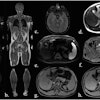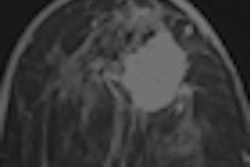In the push to convert to digital mammography, many facilities are using computed radiography (CR)-based systems as an interim step. But just how well does CR mammography compare to traditional analog imaging in a screening environment?
Just fine, according to Finnish researchers. In fact, full-field digital mammography (FFDM) with CR-based technology scored better than conventional film-screen mammography (FSM) as measured by cancer detection rate in a new study published online in the journal Acta Radiologica (April 30, 2010).
Lead author Dr. Seppo Lipasti of Terveystalo Healthcare Helsinki Mammography Screening Center in Finland and colleagues compared the use of both technologies in patients participating in the Mass Screening Registry/Finnish Cancer Registry.
Finland is increasingly shifting toward full-field digital mammography, Lipasti told AuntMinnie.com in an e-mail. Many facilities adopt CR mammography rather than more expensive flat-panel FFDM systems due to economics; Lipasti's facility is currently using both digital technologies for screening.
To measure CR mammography's effectiveness against film-screen imaging, Lipasti and colleagues looked at cancer detection rates, recall rates, test specificities, and positive predictive values. The group's study population consisted of 27,593 women who received film-screen mammography between 1999 and 2000, and 23,440 women who received CR digital mammography between 2007 and 2008.
Lipasti and colleagues found that more cancers were detected by CR digital mammography, which had a cancer detection rate of 0.6% per woman screened (n = 146), than by FSM, which had a rate of 0.4% per woman screened (n = 112). The difference was statistically significant. The specificities of the technologies were similar, with CR digital mammography scoring a specificity of 98.9% versus FSM at 98.8%.
Of the women who received CR digital mammography, 1.7% (401) were recalled for further workup, whereas 1.6% (438) of the women who received FSM were recalled. Among all recalls, the positive predictive value of each technology for cancer was higher in digital mammography (36%) than in FSM (26%), although the difference in recall rates was not statistically significant, according to Lipasti.
Women were recalled when tumorlike masses, parenchymal distortion/asymmetry, calcifications, or a combination of mass and calcifications were discovered. Women were recalled for diagnostic workup most often due to tumorlike masses, Lipasti wrote, and this was more common in FSM (1.1% per woman screened) than in digital mammography (0.9% per woman screened).
The second most common finding that led to recalls was parenchymal distortion and asymmetry, which occurred more often with CR digital mammography (0.6% per woman screened) than with FSM (0.4% per woman screened). Calcifications were the third most common finding: CR digital mammography exposed calcifications more often (0.5% per woman screened) than FSM (0.3% per woman screened).
The findings indicate that digital mammography, even with less expensive CR-based units, could confer advantages over traditional analog technology, according to Lipasti.
"We were surprised [to find] that digital mammography screening based on CR technology detected so many more breast cancers than did FSM screening," Lipasti told AuntMinnie.com. "Digital mammography screening really contains new aspects as a breast cancer screening method, and it may have bigger [advantages] compared with film-screen mammography screening than we have believed so far."
By Kate Madden Yee
AuntMinnie.com staff writer
May 11, 2010
Related Reading
Mammography market awaits new FDA rules on FFDM regulation, October 13, 2009
FDA: FFDM installs cross 50% threshold, May 11, 2009
FFDM equals analog mammography in hard-copy reading, May 7, 2009
Digital mammography transition: The agony and the ecstasy, May 5, 2009
Mammography procedure volume drops 16% since 2000, March 17, 2009
Copyright © 2010 AuntMinnie.com



















